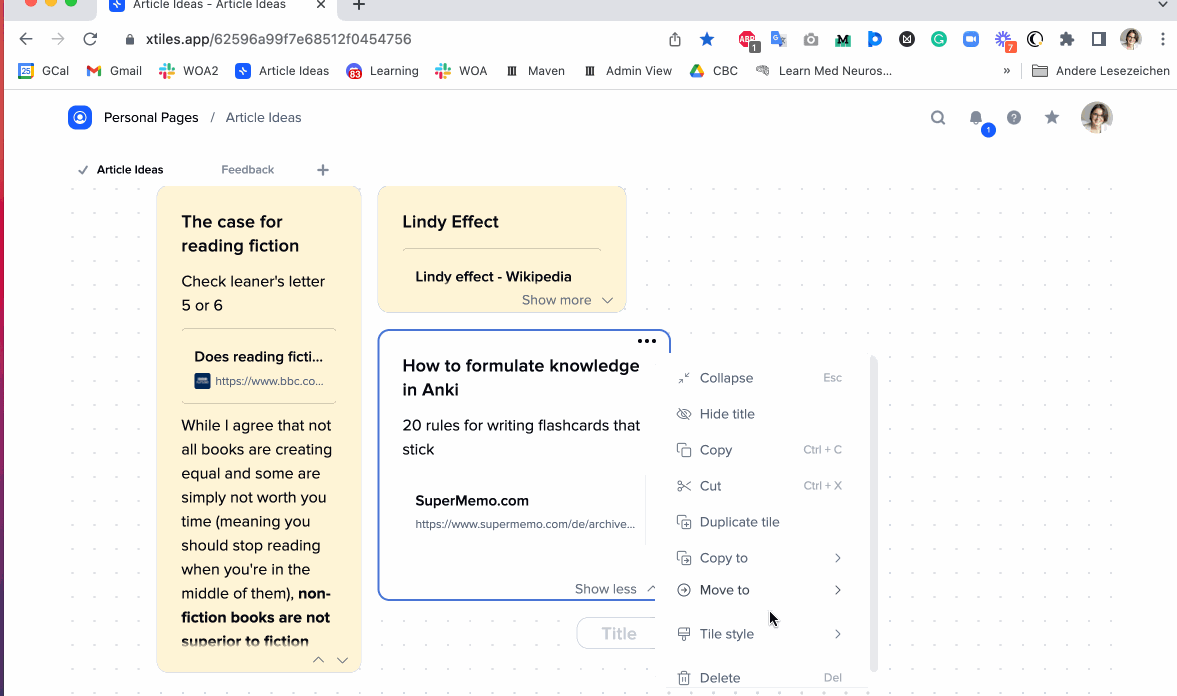Creativity is a choice once you manage your ideas.

When I started writing, I felt I had nothing worthy to say and that I’d soon run out of ideas. Two years and 300 articles later, I know I was wrong about both.
Everybody has something worthy to share.
And creativity is a choice.
The following lines reveal how you can have endless ideas and what to do with them.
“Most things have been done, but they have not yet been done by you.”
— Elizabeth Gilbert
How to Train Your Brain to Have Endless Ideas
After I had published my first three articles, I had no ideas left. I faced most writers’ biggest fear — a blank page.
Luckily, I soon learned how to always have ideas at your fingertips. These are the two creativity principles I’ve used ever since.
Don’t kill your baby ideas…
In the beginning, almost all ideas are shit. They lack substance, examples, research, or anecdotes.
That’s why new writers judge and discard their ideas very early. In fact, too early. Ideas need time to mature.
If you kill your ideas when they’re still at the baby stage, you’ll never know how they might have turned out.
And, even worse: you tell your brain your ideas are worthless. It will soon stop generating new ones.
What you want to do is to be neutral towards any idea that crosses your mind. Acknowledge it’s too early to know whether the idea is good and continue with step two.
…but capture them.
Every idea is worth capturing. Because you’re now telling your brain, it’s worth generating new ones. Your brain will become your best idea supplier.
The challenge?
Ideas come when you don’t expect them.
Most of my ideas come while I write another article, meditate, go for a run, or have a conversation with friends. That’s why you want to have a clear workflow for idea capturing.
How to Pick Your Idea Management Tool
When you look for a tool to capture your ideas, you want it to fulfil three key criteria: Do you know how to use it? Do you like how it looks and feels? Will you use it every day?

In the beginning, I spent hours looking for the best tool. But comparing tools can distract you from actually doing the work.
Let me save you some time by demonstrating what worked and what didn’t work for me. My idea boards evolved from an unhandy Trello to a still unhandy Notion, to a more flexible Milanote, to xTiles.




xTiles combines all features I was looking for. It’s a mixture of note-taking and a whiteboard — as if Milanote and Notion had a baby.
It’s not as rigid as Notion and Trello, I can visually organize information. And yet, it has a level of organization I missed in Milanote. Here are two examples:


What to Keep in Mind
Your life is full of inspiration once you start looking for it. You can find ideas in conversations, books, movies, podcasts, and even in architecture or relationships.
But ideas arise when you don’t expect them. So the most important part is to have a tool to store them.
Once something strikes your mind, add the idea to your idea board. Add any helpful context, such as videos or next steps, to explore the concept even further:

Once you capture every idea, you’ll swim in a sea of idea abundance. And the more you create, the more creative you become.